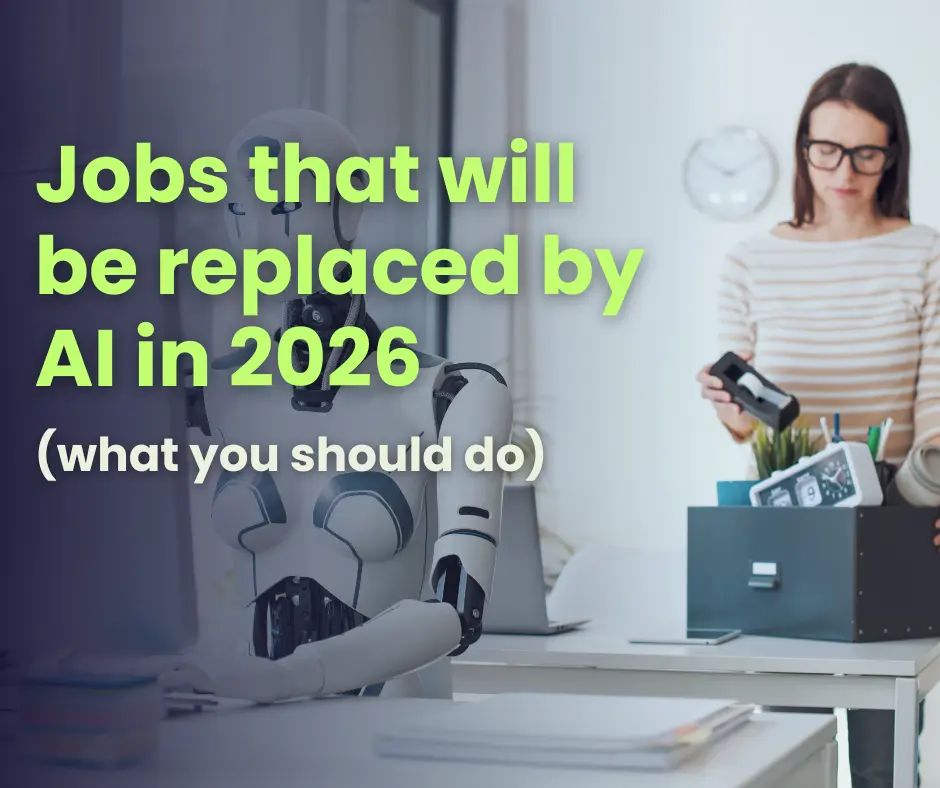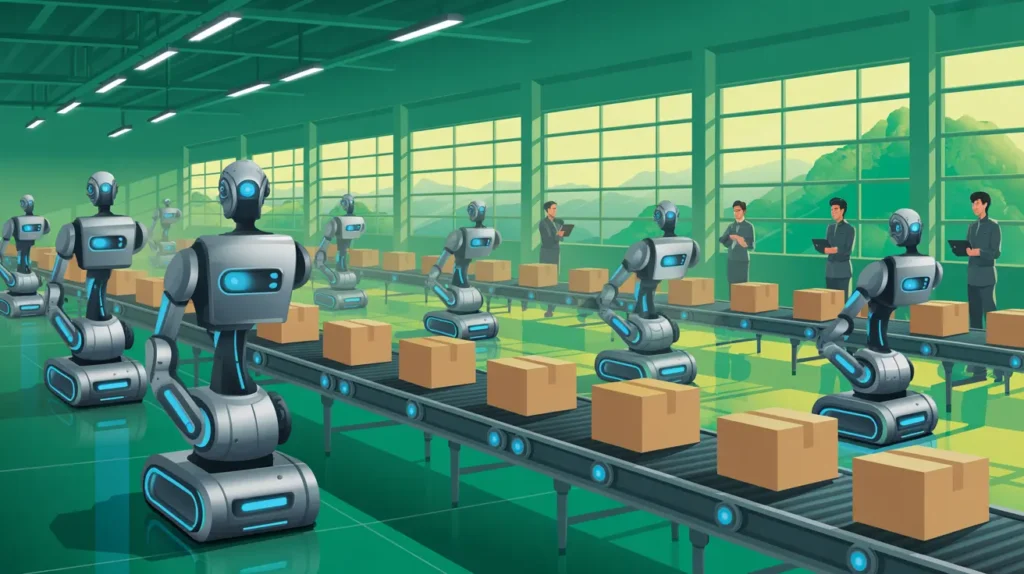
I get asked this question almost every week: “David, which jobs will AI replace in my company?”
It’s usually followed by: “And what do I tell my team?”
Look, I understand the worry. You’ve built your business with good people. The last thing you want is to lay them off because some algorithm can do their work faster.
But here’s what I’ve learned after training over 200 professionals across Southeast Asia in the last five months: AI isn’t coming for jobs. It’s coming for tasks. And that’s actually good news.
Let me break down what’s really happening – and more importantly, what you can do about it right now.
Customer Service Teams Are Changing Fast
Your customer service department is probably where you’ll see AI impact first.
IBM replaced 200 HR positions with a chatbot that now handles 11.5 million conversations a year. Salesforce cut their support team from 9,000 to 5,000 people. These are real numbers from 2025.
In Malaysia and across Southeast Asia, this hits close to home. The Philippines has 1.3 million people in BPO roles. Research shows 89% of those jobs face automation risk.
But here’s what the statistics don’t tell you: those BPO companies actually added 135,000 jobs last year.
Why? Because they’re moving people from basic “password reset” calls to complex problem-solving. AI handles the routine questions. Humans handle the relationships.
What you should do: Don’t panic and start cutting staff. Instead, identify which customer interactions are repetitive and which need genuine problem-solving. Train your team to handle the complex stuff while AI takes care of the simple questions.
Your customers will be happier. Your team will do more meaningful work. And you’ll save money.
Your Finance and Admin Teams Need Upskilling Now
This is where I see the biggest gaps in most companies I work with.
AI can handle data entry, invoice processing, basic financial reports, and expense management. If someone in your office spends all day moving numbers between spreadsheets, that job will change dramatically in the next 2-3 years.
Wall Street banks are projecting 200,000 job cuts by 2028. The US Treasury used AI to catch $4 billion in fraud last year, up from $652 million the year before.
But here’s the opportunity: employees who learn to work alongside AI earn 18-43% more, depending on their role. Your finance team doesn’t need to shrink. They need to upskill.
What you should do: Start with one afternoon training session. Show your team basic AI tools for their daily work. I’ve seen accounts teams cut report preparation time by 60% while actually improving accuracy. The time savings let them focus on analysis and strategy instead of data entry.
Content and Marketing Roles Are Splitting
I run a training company, so I create a lot of content. And yes, I use AI tools every single day.
About 81.6% of marketers worry AI will replace writers. Some companies like BlueFocus already cut all their human writers. Duolingo reduced contractors by 10%.
But in my training sessions, I teach something different: AI writes the first draft. Humans make it good.
Your marketing team can use AI to write social media posts, email drafts, product descriptions, and blog outlines. One person with AI can produce what used to take three people.
That doesn’t mean you fire two people. It means those two people shift to strategy, brand development, and customer insights.
What you should do: Give your marketing team AI writing tools (ChatGPT, Claude, Jasper). Measure their output over one month. You’ll probably see them produce 40% more content in the same time. Now redirect that extra capacity toward higher-value work like campaign strategy and customer research.
If you’re wondering how to supercharge your team’s productivity with AI, start with the basics and build from there.
Manufacturing and Warehouse Operations Are Transforming
If you run a manufacturing or logistics business in Malaysia, Thailand, or Vietnam, you’re watching this closely.
Amazon has over a million robots in its warehouses now. Productivity jumped from 40 units per hour to 150 units per hour. That’s not a typo.

Thailand will lose 840,000 manufacturing jobs but create 1.2 million new ones by 2028. The jobs aren’t disappearing. They’re changing from assembly line work to robot supervision, maintenance, and systems management.
What you should do: Don’t wait for full automation. Start small. Identify your most repetitive, dangerous, or physically demanding tasks. Those are your first automation candidates. Then invest in training your existing team to manage the automated systems. It’s cheaper than hiring new people and you keep your experienced workers.
Sales Teams Need to Move Upmarket
Cold calling is basically over. AI can make thousands of calls per day, qualify leads, and book appointments. It never gets tired or discouraged.
But relationship-based sales? That’s all human.
If your sales team is still making cold calls all day, they’re competing with AI that works 24/7. If they’re building long-term client relationships and solving complex business problems, they’re more valuable than ever.
What you should do: Shift your sales strategy from volume to value. Let AI handle lead qualification and initial outreach. Train your salespeople to focus on consultative selling, relationship building, and strategic accounts. The companies I work with that made this shift actually increased revenue while reducing headcount stress.
Tech and IT Roles Are Getting Weird
This surprises people. Microsoft laid off 6,000 programmers in 2024 after their CEO said AI now writes 30% of their code.
But demand for senior developers is higher than ever. Developers with AI skills earn 43% more.
The pattern: junior coding jobs are declining. Senior architecture, strategy, and leadership roles are growing.
What you should do: If you have a tech team, invest in their AI skills immediately. Developers who can work with AI coding tools are 50% more productive. Your competition is already doing this. Don’t let your team fall behind.
Design and Creative Work Is Splitting Too
Tools like Midjourney and Adobe Firefly let one designer do what used to take a team.
Entry-level graphic design work – social media graphics, basic layouts, simple edits – is going to AI.
But creative direction, brand strategy, and work that requires cultural understanding? Still needs humans.
What you should do: Train your designers to use AI as a productivity tool, not see it as a threat. The designers I train learn to generate 10 options in minutes, then use their expertise to refine the best one. They produce better work faster.
What This Actually Means For Your Business
Let me be direct: if you’re a business owner or HR leader in Southeast Asia, you have about 3-5 years to figure this out. Maybe less.
The companies I see succeeding aren’t the ones cutting staff aggressively. They’re the ones investing in training.
Here’s what I recommend based on working with companies like Great Eastern, Nuskin, UOB Kay Hian, and TNB:

- Step 1: Do a task audit this month. Don’t look at job titles. Look at what people actually do all day. Which tasks are repetitive? Which need human judgment? Be honest.
- Step 2: Start one pilot project next month. Pick one department. Give them AI tools. Measure the results. Learn from what works and what doesn’t.
- Step 3: Build a training program. Your people want to learn. 68% of workers say they’re willing to retrain. But only 15% see clear plans from leadership. Be the leader with a plan.
- Step 4: Communicate honestly. Your team knows AI is coming. Not talking about it makes them more anxious, not less. Tell them what you’re planning. Involve them in the process.
The investment isn’t as big as you think. I’ve helped SMEs start with $25/month training subscriptions and free tools. The productivity gains pay for themselves in weeks, not years.
Now, before you rush to implement everything at once, there’s something you should know. Most AI training programs fail – not because of the technology, but because companies make predictable mistakes during implementation.
I’ve seen it happen too many times, and it’s completely avoidable if you know what to watch out for.
The Real Question Isn’t “Which Jobs” – It’s “What Now”
Every business leader I talk to eventually asks: “Okay David, but what do I actually do?”
Here’s my honest answer: start small, move fast, and focus on your people.
AI won’t replace your jobs. It will replace you if you don’t adapt. That’s not a threat – it’s just reality.
The good news? You’re not alone in figuring this out. I’ve spent the last year helping companies across Malaysia transform their teams without destroying morale or productivity. It’s possible. But you need to start now, not later.
Your competition is already training their teams. Your industry is already changing. The window to act proactively instead of reactively is closing fast.
If you’re serious about preparing your team for AI without the panic and chaos, let’s talk. I’ll show you exactly how we’ve helped companies like yours transform successfully – without massive layoffs or consultant-speak nonsense.
Get in touch here and we’ll figure out the right approach for your specific situation.
Frequently Asked Questions
I know you probably have more questions. Here are the ones I hear most:
Will AI really replace that many jobs?
Not exactly. World Economic Forum research shows 92 million jobs will be displaced by 2030, but 170 million new jobs will be created. The net result is positive. The challenge is the skills gap – people need training to move from old roles to new ones.
How long do we have to prepare?
3-5 years for most industries. Some sectors like customer service are already seeing major changes. Others like healthcare are moving slower. But don’t assume you have a decade. The companies starting now will have the advantage.
What if my team resists AI training?
In my experience, 89% of employees are actually excited to use AI – they’re just scared of losing their jobs. When you frame it as “learning new skills to stay valuable” instead of “adapt or get fired,” resistance drops dramatically. Make it about empowerment, not replacement.
How much does AI transformation cost?
Less than you think. I’ve worked with SMEs who started with free tools and basic training. The bigger cost is usually time and organizational change, not technology. A proper training program might be 10-15% of payroll, but the productivity gains usually pay for it within 3-6 months.
I’ve written a detailed breakdown of practical AI courses designed specifically for employee training if you want to explore your options without the sales pitch.
What skills should we prioritize?
AI literacy is obvious, but 58% of needed skills are actually soft skills: analytical thinking, creativity, emotional intelligence, leadership. Don’t just teach people how to use ChatGPT. Teach them how to think strategically, solve complex problems, and work collaboratively. Those skills combined with AI tools create real competitive advantage.The truth is, many skills training initiatives fail because they focus on the wrong problems. You need to address the root causes, not just throw training courses at people and hope something sticks.

